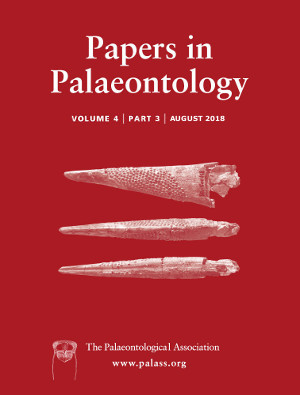Reg. Charity No. 1168330

Catenipora is one of the most common tabulate coral genera in the Upper Ordovician Jinghe and Beiguoshan formations on the southern margin of the Ordos Basin, north‐central China. We distinguish and identify the species of Catenipora using multivariate morphometric procedures. Cluster analysis based on morphological characters of coralla yields a dendrogram showing five morphospecies. The validity and distinctiveness of the morphospecies are evaluated by discriminant analysis and non‐metric multidimensional scaling. To identify the species represented by the morphospecies, type specimens of species that are morphologically similar from north‐central China (Sino‐Korean Block) and surrounding palaeocontinents are compared with the morphospecies by non‐metric multidimensional scaling and descriptive statistics. The results indicate that one morphospecies represents C. daliangensis (Yu), another represents C. subovata Yu, and the others are new species herein named C. tongchuanensis, C. jingyangensis and C. tiewadianensis. Catenipora tongchuanensis from the middle of the Jinghe Formation (Sandbian; early Late Ordovician) is the earliest confirmed halysitid tabulate. Species of Catenipora in north‐central China (Sino‐Korean Block) show the highest morphological diversity (i.e. disparity) in terms of corallite size and shape, compared with other palaeocontinents in China. Species of Catenipora in North Qilian share more common components with those from north‐central China than any other palaeocontinent in China. The different morphological characteristics in terms of corallite shape and ranks in some Katian species of Catenipora from East Junggar, Mongolia, South China and Estonia suggest that some species may have originated separately during the Great Ordovician Biodiversification Event, and that Catenipora is possibly polyphyletic.